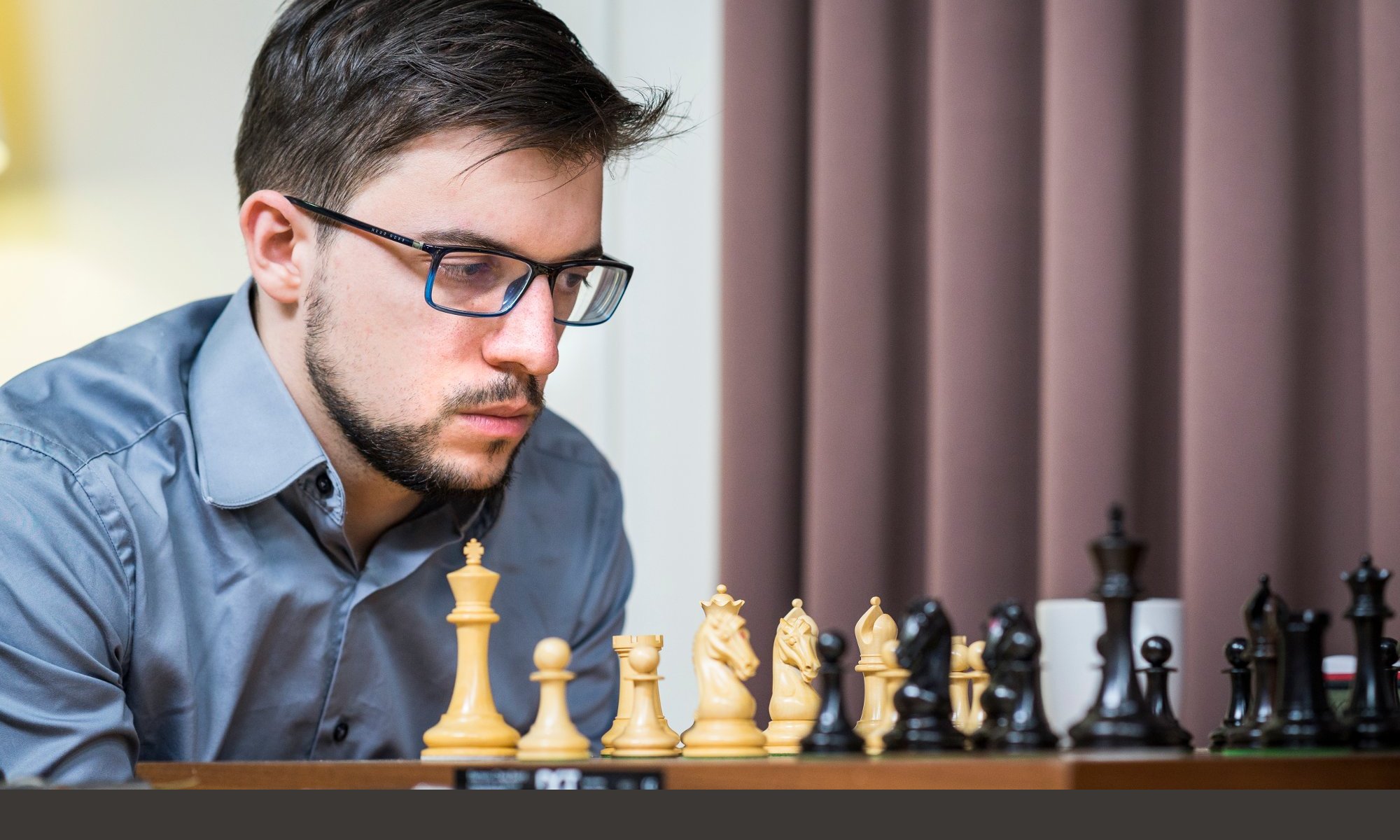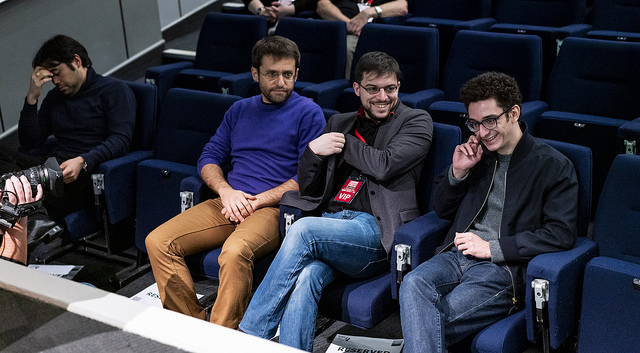The 2018 Grand Chess Tour (GCT) Finals brought together the Top 4 finishers of the regular season, Nakamura, Aronian, Caruana and myself.
I arrived in London 48 hours before the beginning of the tournament, scheduled on December 11. Indeed, the traditional Pro Biz Challenge was taking place the day before, in Google headquarters. Each player was partnered with a businessman, both alternating moves. As usual, I teamed up with Gilles Betthaeuser and for the anecdote, we had a very reasonable result of one win, one draw and one loss, as we were paired with pretty good duos…
For the last event of the year, two semi-finals were scheduled (Nakamura-Caruana and Aronian-Mvl), over three days and 8 games (2 Classical, 2 Rapids and 4 Blitz), with 6 points for each Classical game, 4 points for each Rapid, and 2 points for each Blitz.
MVL-ARONIAN 18-10
I suffered in both Classical games. With white, I went for an erroneous plan right after the opening, 13.Nb3 followed by 14.d4. It was just a bad idea. Then, I was forced to play moves which didn’t look very natural, as 18.Ra2 in the following position:
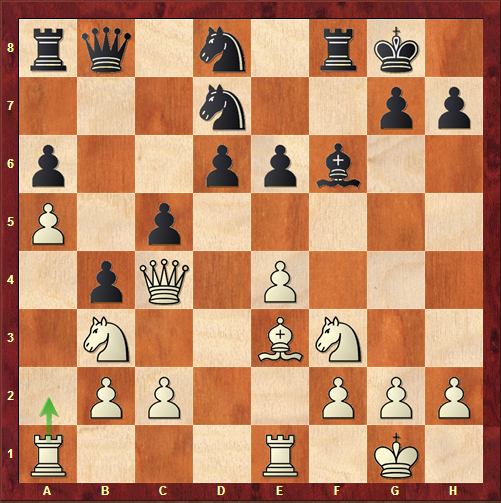
I know this move had Kasparov screaming, as he was commentating the game live! But unfortunately, I already didn’t have much choice… I ultimately ended up in a naughty endgame, and during the game, in the following position, I was relieved to see 24…Rac8.
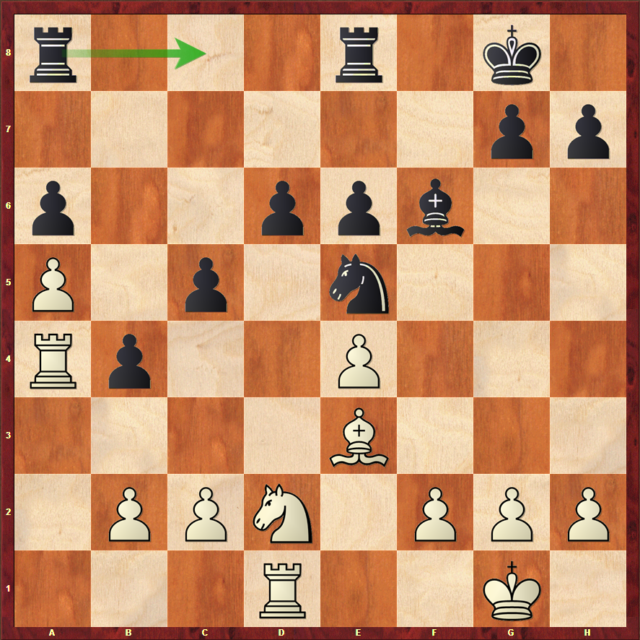
Instead, I was fearing 24…Ng4 25.Nc4 Nxe3 26.fxe3 Rad8! followed by 27…d5, and if 27.Rxd6 Rxd6 28.Nxd6 Rd8 29.Nc4 Rd1+ 30.Kf2 Rc1, and with the Rook infiltrated and its counterpart pitiful on a4, black’s advantage is undisputable. In the game, I was able to sacrifice the exchange for a pawn, with the feeling that the worse was behind me:
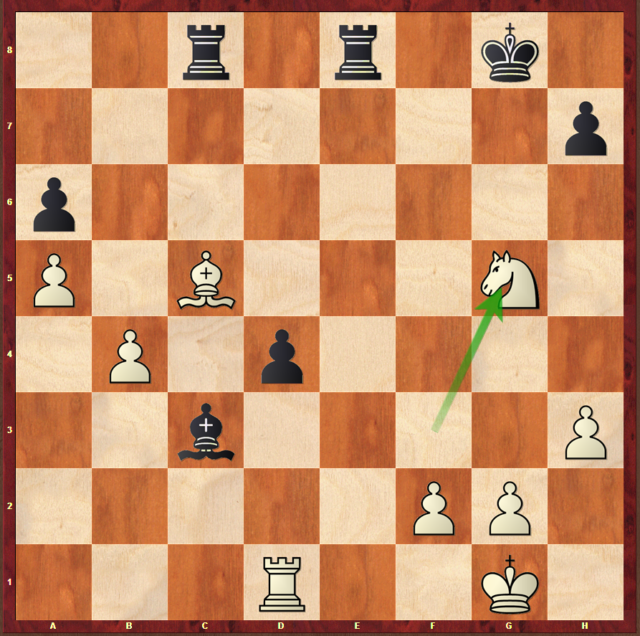
However, black could still have pressed with 33…Re1+! (instead of 33…Rb8) 34.Rxe1 Bxe1 35.Kf1 Re8 36.f3 (36.Nf3? d3! 37.Nxe1 d2) 36…Bc3. I didn’t verify, but I guess it should hold for white. Nevertheless, it was obviously a better try for him.
In the end, I could even play on an ending with Bishop and two connected pawns against Rook, but with minimum accuracy, black drew without much difficulty.
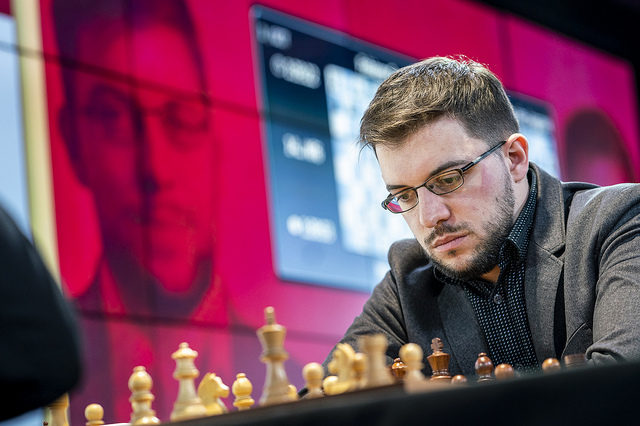
In the second game, I once again was inaccurate in the opening, in a well known variation of the English, for which Aronian had prepared the very rare 9.d4!?.
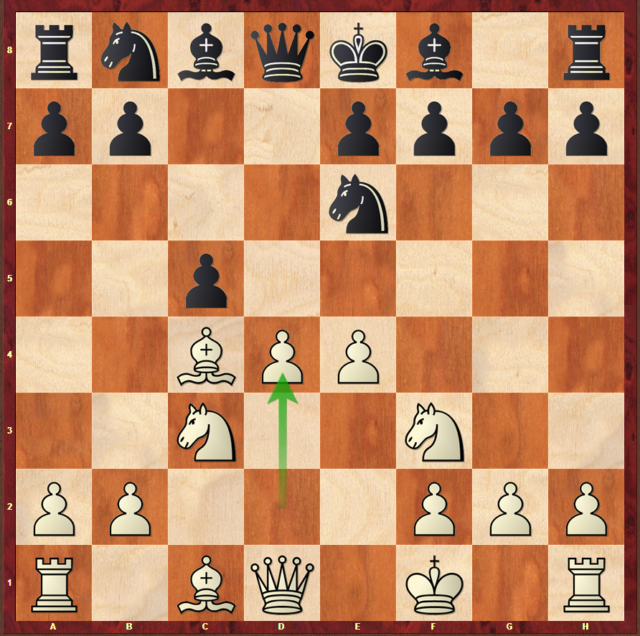
After 9…cxd4 10.Bxe6 Bxe6 11.Nxd4, I went into a deep think and took a radical decision, 11…Nc6. Of course, I was aware of the fact that 11…Bc4+, or even 11…Bd7, were probably better moves, but from a practical point of view, I felt that 11…Nc6 would be more cautious, and would allow me to keep things under control. Unfortunately, I couldn’t manage to put my Bishop on c5, in order to exchange black-coloured Bishops, and I had to do it via the manoeuver …Bb4-a5-b6, which is pretty slow. Therefore, Levon got enough time to direct his Knight towards c5.
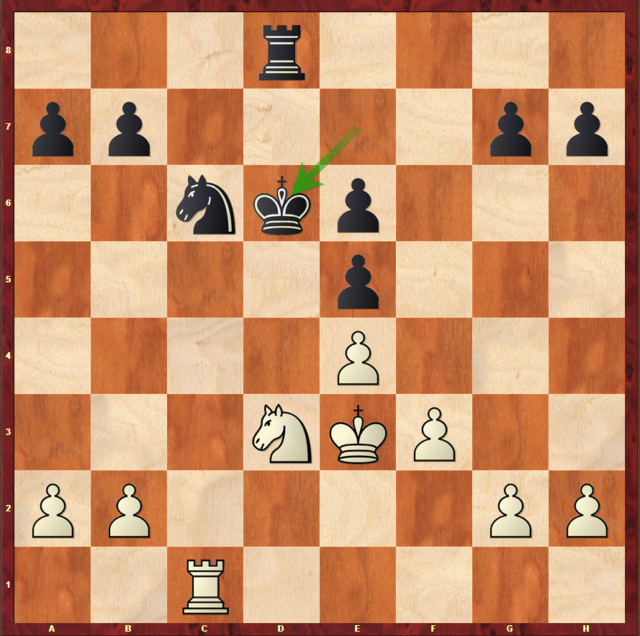
Here, Levon rushed with 24.Nc5?!, whereas after the excellent 24.b4!, I couldn’t see how I would react. If 24…b6 – the most natural – then 25.b5 Na5 (25…Nd4? 26.f4! Nxb5 27.Nxe5 loses material) 26.Nb4 and I don’t move an inch! So, after 24.Nc5?! Rb8 25.h4, I didn’t give it a second thought and I immediately went for the sequence 25…Nb4 26.a3 b6!? 27.Nxe6 Na2.
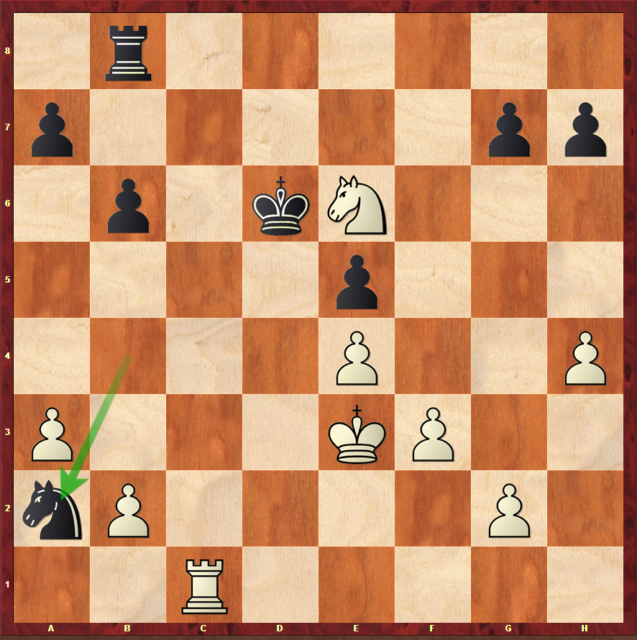
I had seen that 28.Rc2! would lead to a better version of the Rook endgame for him than in the game after 28.Ra1. Indeed, after 28.Rc2! Kxe6 29.b3 Rd8 30.Ke2, I can’t infiltrate the Rook, for instance 30…h5 31.Rxa2 Rc8 32.Kd1! Rc3 33.Rb2 followed by 34.Kd2. Therefore, my only chance would have been to look for counterplay by 30…Kf6 31.Rxa2 Rc8 31.Kd1 g5! and maybe black survives, but it’s tightrope walking!
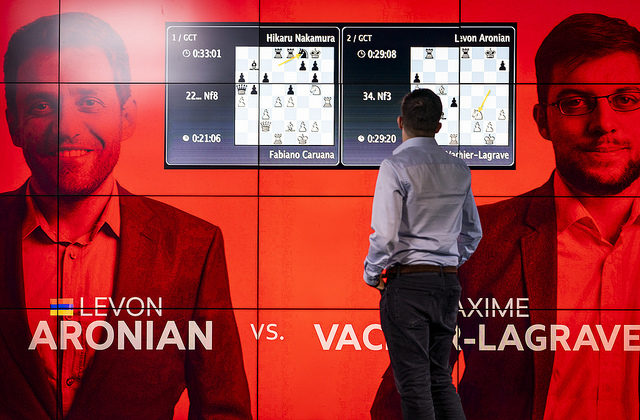
In the first Rapid game, I suffered again, but for once without realizing it, until I understood, in the following position…
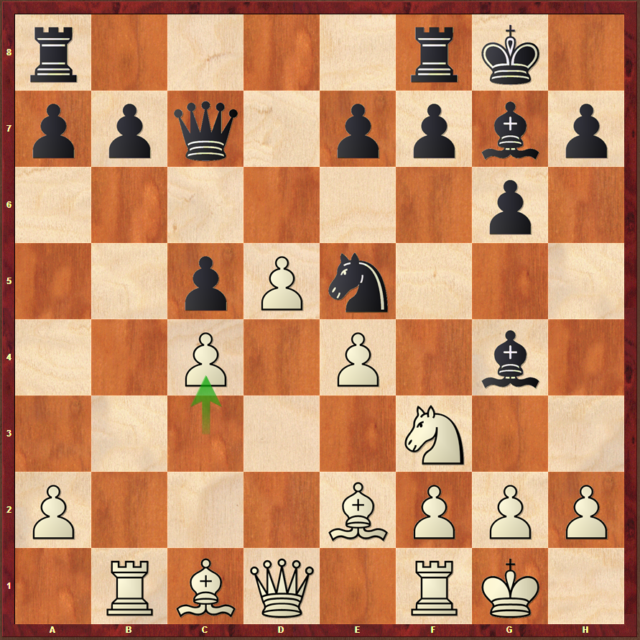
… that the move I intended to play 14…Bxf3, didn’t work after 15.gxf3 Nd7 16.f4 e5 (otherwise 17.e5) 17.fxe5 followed by 18.f4, and white is better.
With all heavy pieces on the board, I had to tolerate a protected passed pawn on d6, in a higly difficult position to play. And we arrive at the computer’s winning line, utterly surreal, judge for yourselves!
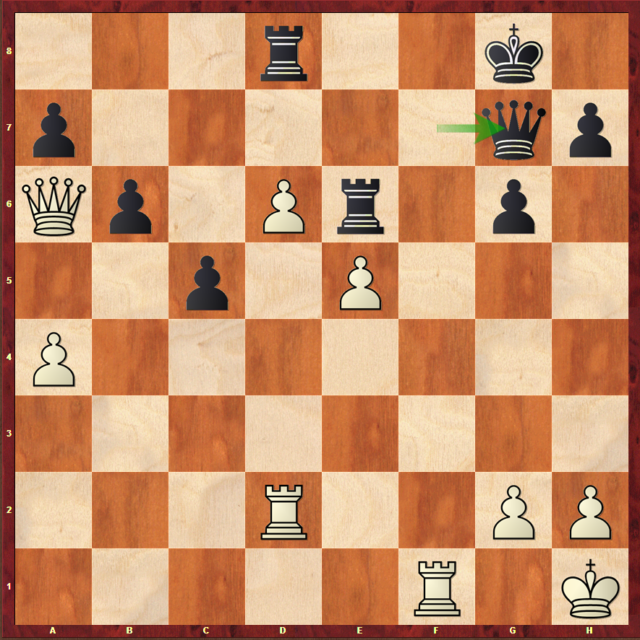
31.Re2! Rxe5 32.Qc4+ Kh8 33.h3!!, only winning move, the machine says… It’s obvious Levon didn’t play this line, but the normal 31.d7, and I replied 31…Rxe5, as I believed that 31…Qxe5 failed to the very cute variation 32.Qc8 Qf6 33.Rg1 Qe7(?) 34.Rdf2 Re1 (34…Qxd7 35.Rf8+) 35.Qxd8+! Qxd8 36.Rf8+ Qxf8 37.Rxe1 Kf7 (37…Kg7 38.Re8) 38.Rf1+. Nice, but the computer shows no mercy with the saving line 33… Qg5! (instead of 33…Qe7?) 34.Rdf2 Kg7! 35.Rf8 Re2, which is fairly impossible to find in Rapid chess.
After 31…Rxe5 32.Qxa7 Qf6 33.Kg1 Qc6, I was able to head for a smooth draw; perhaps he could have tried 33.Qa6, even though I thought I would hold after the same move 33…Qc6.
I won the second Rapid game against the famous Berlin Wall, this Queenless middlegame full of nuances, in which the frontier between getting something and getting nothing at all, is very narrow.
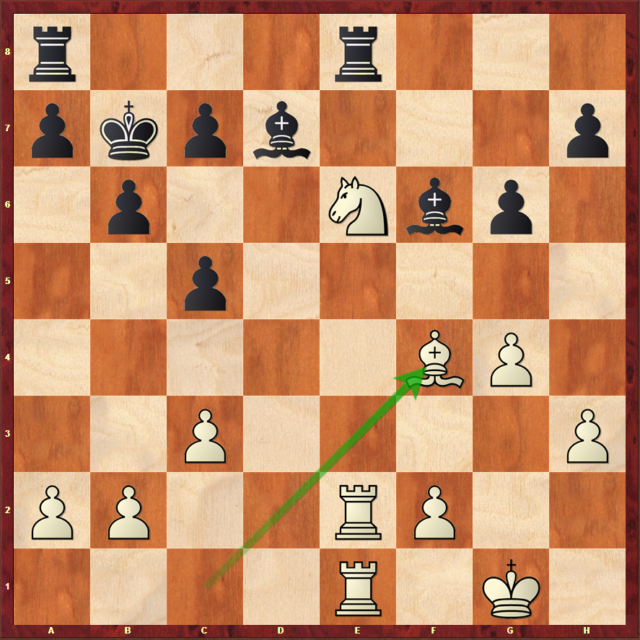
This is a very good version of this variation for white, his pawn on g4 being a plus. Levon chose the hard way with 24…Bxe6 25.Rxe6, but on 24…Rac8, I had planned the nice combination 25.g5 Bh8 26.Nxc7 Rxe2 27.Rxe2 Rxc7 28.Re7! Kc6 29.Bxc7 Kxc7 30.f4! and the Bh8 will be lost after 31.Rxh7.
With the 4-point lead given by this game, I could face the blitz portion with serenity, and I won it 3-1.
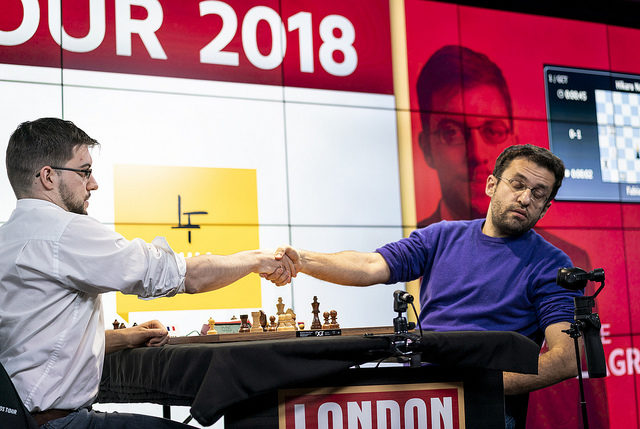
This qualification for the 2018 GCT Final against Nakamura (who had beaten Caruana) guaranteed my entry ticket for edition 2019, as well as the pleasure of leading the World Blitz rankings, ahead of Magnus Carlsen!
MVL-NAKAMURA 13-15
After a day off, the tournament was moved to the Olympia Theater. The final’s scenario was the reverse of the semi-final for me, as I was clearly dominant in the two Classical games.
In the first one, I was really surprised by his choice of variation against the Grunfeld. I knew that this position, not only didn’t give anything to white, but furthermore, could easily go wrong after an inaccuracy.
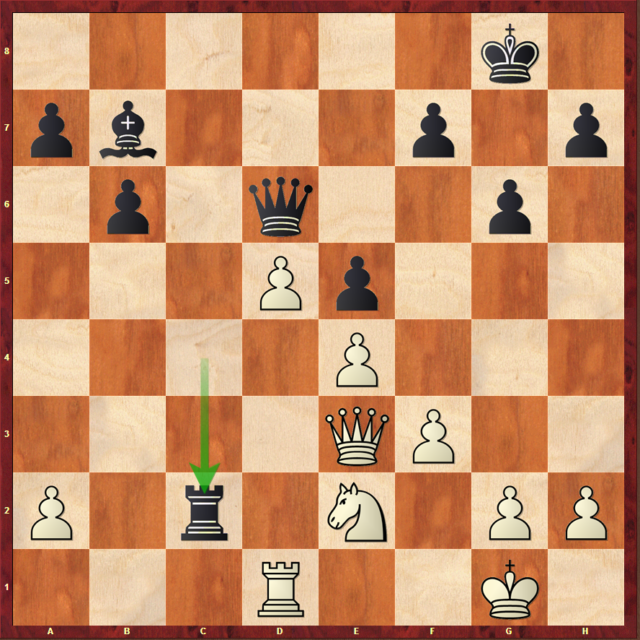
And this is precisely what happened when, in this position, Naka realized that his planned move 24.Rd2? failed to 24…Qb4!. So he chose 24.a3, and I didn’t dare going after his a pawn with 24…Ra2 25.Nc3 Qxa3 26.Qc1! (better than 26.d6 Ra1!), because I feared his counterplay, with a passed d pawn and the possibility of h4-h5. But then, after 24…Ba6 25.Ng3 Qc5 26.Qxc5 Rxc5, he could have drawn easily with 27.Nf1! (instead of 27.d6) 27…Bxf1 (27…Kf8 28.d6 Ke8 29.Ne3 gives enough play) 28.Kxf1 and I think the Rook ending doesn’t give much hope of a win. After a forced series of moves, we reached the following position:
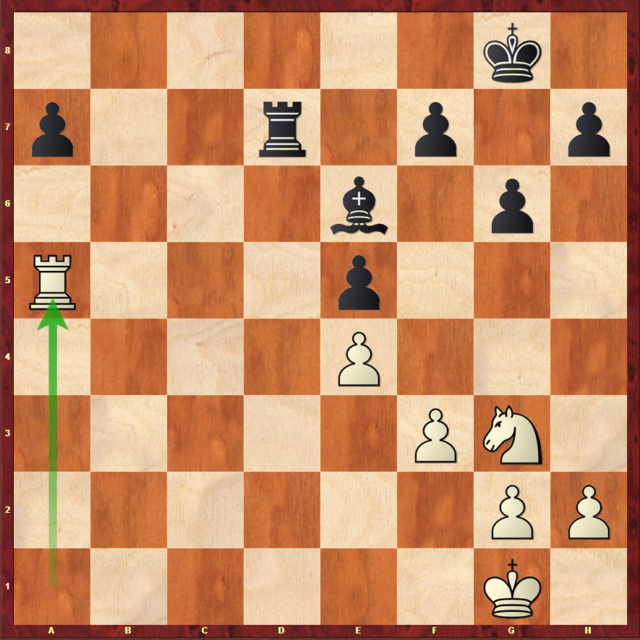
Here, I have been criticised for my choice of 33…f6 instead of 33…Rd1+ 34.Kf2 Rd2+ 35.Kg1 Ra2 36.Rxe5 a5. But during the game, I had the feeling white would get good drawing chances after 37.f4! a4 38.f5. However, carrying out this manoeuver without giving e5 was possible a few moves later, and I believe it’s probably there that my best chances laid.
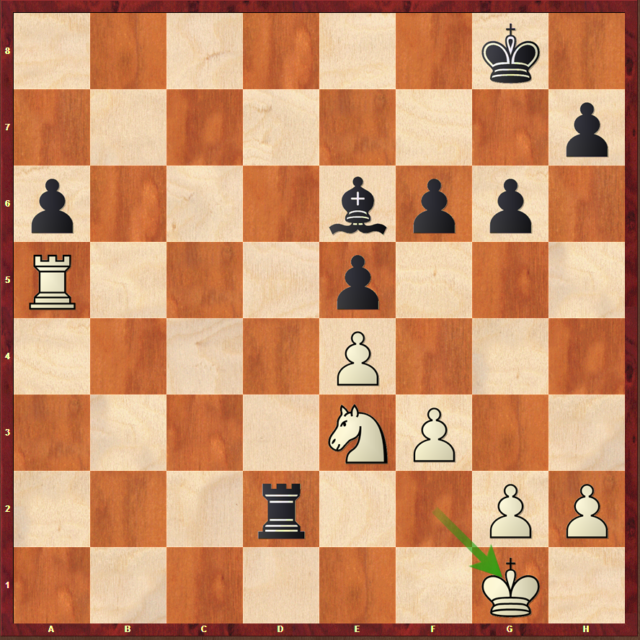
Here, I played 37…Rd6?, with the basic idea of bringing back the King to the Queenside. But it was a serious error of judgement because after 38.h4! Kf7 39.g4! followed by 40.g5, I understood that black couldn’t win anymore. Instead, I should have chosen 37…Ra2! 38.Rc5 h5! with intact winning chances (it is important to be able to bring the King without losing the h pawn, for example if 38…a5 39.Rc6 Kf7 40.Rc7+).
In the second game, I again managed to get the advantage out of the Berlin endgame:
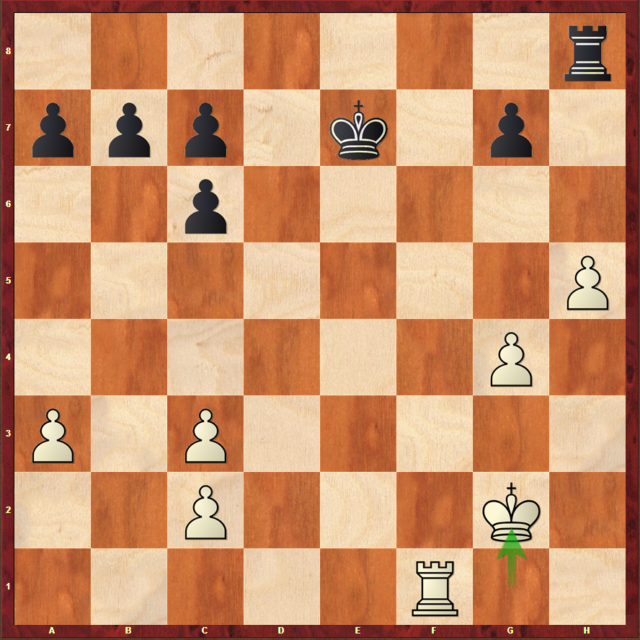
But Hikaru really defended well, particularly in this position with 31…g6! 32.hxg6 Rg8. Maybe I could have set more problems in this ending, but I don’t believe it would have been enough to change the final result (draw).
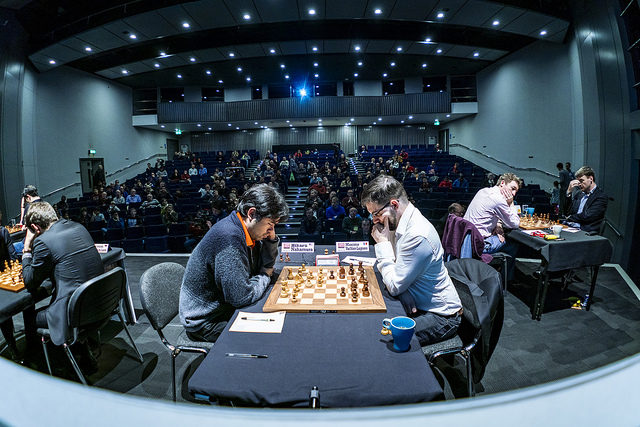
In the first Rapid game, still in a Berlin, I put the wrong Rook on d1.
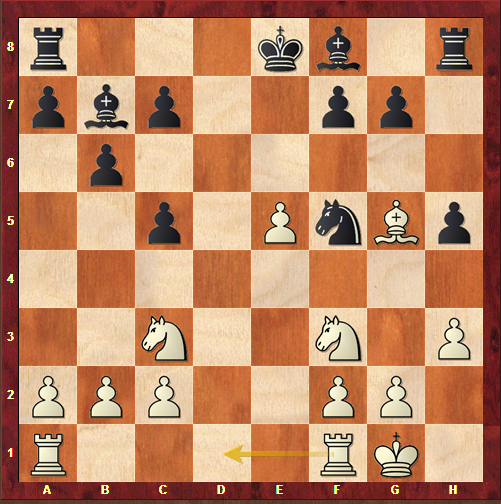
I knew 14.Rad1, but I played the imprecise 14.Rfd1?!. There are so many nuances to remember in the openings! Therefore, I got absolutely nothing (draw, 33 moves).
In the second Rapid game, I had already analyzed this line of the English opening. I knew it was ok for black, including after his pawn sacrifice:
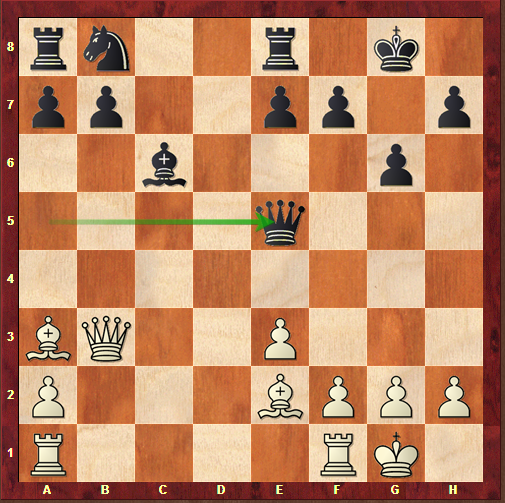
Nevertheless, after 16.Bc4 Rf8, he found the excellent sequence 17.f4! Qe4 18.Rf2, against which I instinctively reacted by the developing 18…Nd7?!.
However, I should have stopped to think here, and not on the following move, in order to find another way (18…b5!? immediately?). Because after 19.Rd1, I realized that I had to face huge issues. My first intention, 19…Nb6, finally looked doubtful, as after 20.Rd4 Qf5 21.Bd3 Qf6 22.f5!, my position is on the verge of collapse, for instance 22…g5 23.Bb2. So I opted for 19…b5 20.Be2 Qa4, but after 21.Qxa4 bxa4 22.Rc1 Bd5, he found the impressive 23.Ba6!, and his Bishop pair gives headache.
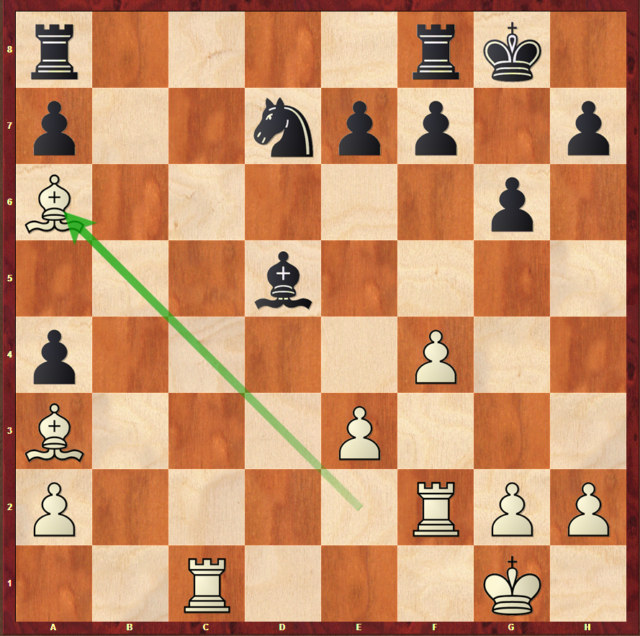
Even though the position remains highly unpleasant, I think I defended rather well. Realizing he was finding no decisive way through, and with the clock ticking, Hikaru started to make his usual funny faces, twice hesitating to repeat moves. He rightly ended up playing on, and while I remained in an awkward position, I spent all my time advantage to try to destabilize him with 47…a3!?.
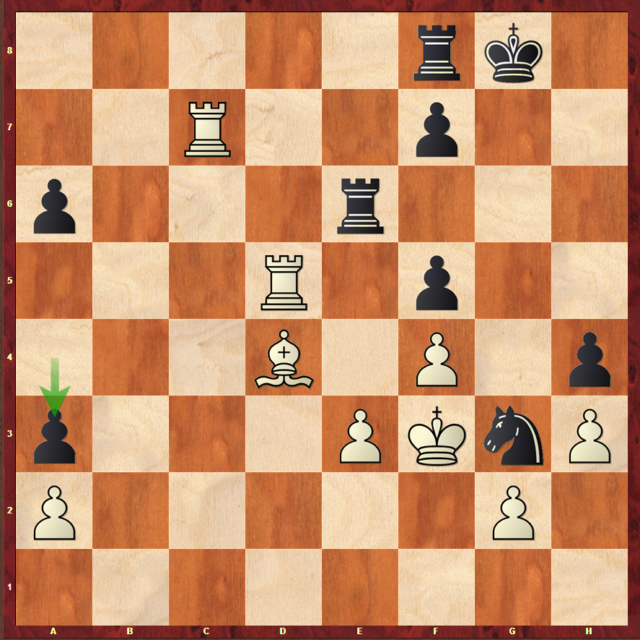
After 48.Rdd7 Ne4 and a third move repetition on his part (49.Rd5 Ng3 etc.), he still tried with 51.Ke2 Rg6 52.Kf1, but it was too late because after 52…Rb8 53.Rb7 Rc8 54.Rdc7, hoping to contain counterplay by clogging both open files, I had the nice ressource 54…Rc6! 55.Rxc6 Rxc6, and thanks to the Rook freeing g6, there’s no more mate in two beginning with 56.Rb8+, but only a perpetual!
The first three blitz games happened to be fairly balanced on the whole (three draws), with only one single moment when we both went wrong, in the first game:
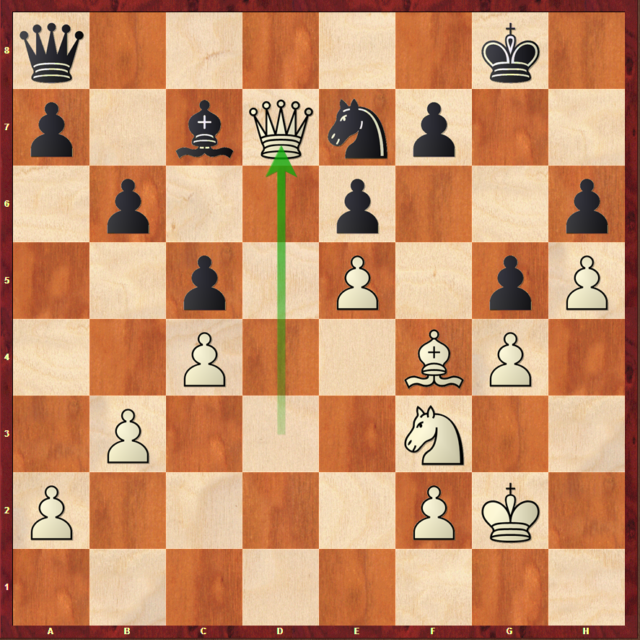
I just played 27.Qd7? and we both forgot the move 27…Nc6!, which leads to an almost winning position for black after 28.Qxc7 Nd4, as after 29.Kf1 Nb4!. « No harm, no fool », and we instead went for the endgame after 27…Qd8? 28.Qxd8+ Bxd8 29.Bd2, but my slight advantage proved insufficient.
Ultimately, after seven straigth draws at all rates of play, everything was decided in the very last blitz. Unfortunately, one can safely say that I went crazy in that game…
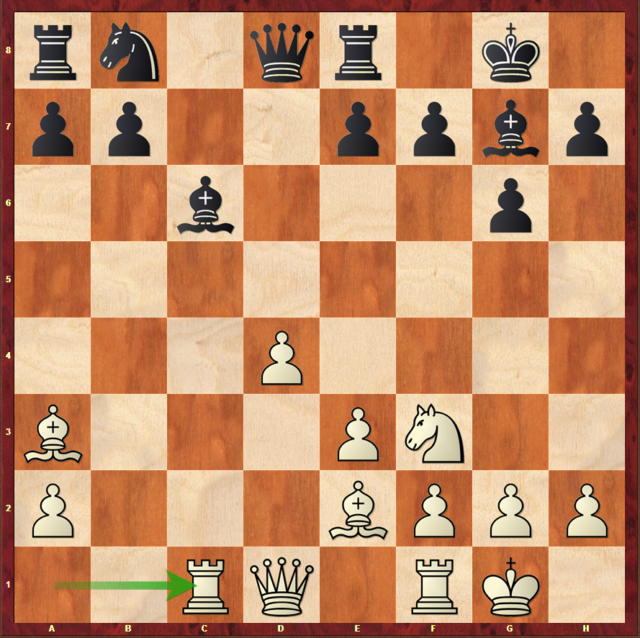
We coninued our theoretical debate on this specific English line, and Naka found the idea 13.Tc1. I knew the normal move was 13…e6, but I was unsure of myself, and I preferred 13…Qa5 14.Qb3 Nd7. Unfortunately, after 15.Bb4, I’m already slightly worse in case of 15…Qa4 16.Qxa4 Bxa4 17.Rc7. But my idea was 15…Qf5?, completely forgetting that after 16.Bd3 Qh5, white has 17.e4!, and my Queen is dangerously surrounded. Then, in practice, it was almost impossible to defend the position…
Beyond my disappointment of this missed game at the very end of the final, I’d rather remember my second place in the 2018 professionnal circuit, for the second time in a row, as well as my qualification for the next edition of Grand Chess Tour.
Next year will be a busy one, and perhaps even busier, depending on what FIDE prepares for its 2019 Grand-Prix. Meanwhile, the Grand Chess Tour spokesman has announced three new tournaments for next year, a Classical one in Croatia, as well as two Rapid ones in India and Ivory Coast. The idea of expanding the number of players in order to see new faces is a good one in my opinion; among Top players, there’s a kind of weariness from playing against each other throughout the year.
2018 is now over for me, as the announcement of the Rapid/Blitz World Championships in Saint-Petersbourg arrived much too late, when I had already planned a short week’s vacation between Christmas and New Year.
Merry Christmas to all, and I will be back in 2019 for new adventures across the board!
A few days before to leave for London, Maxime played in the monthly online Open tournament « Titled Tuesday » on www.chess.com. A far from easy blitz warm-up, as among the 353 players, you could find the likes of Nakamura, Wesley So, and lots of other Grandmasters. In the end, Maxime won the tournament alone with 9/10, finishing with two draws after a resounding 8/8 start, including a win against Nakamura! The tournament crosstable:
https://www.chess.com/tournament/live/-titled-tuesday-blitz-1016282
Site officiel : https://www.londonchessclassic.com/
